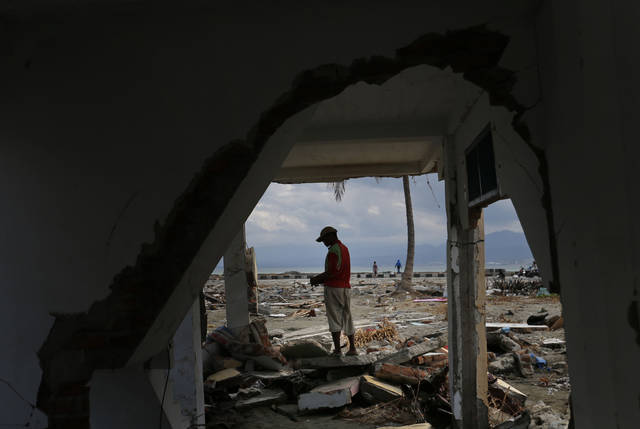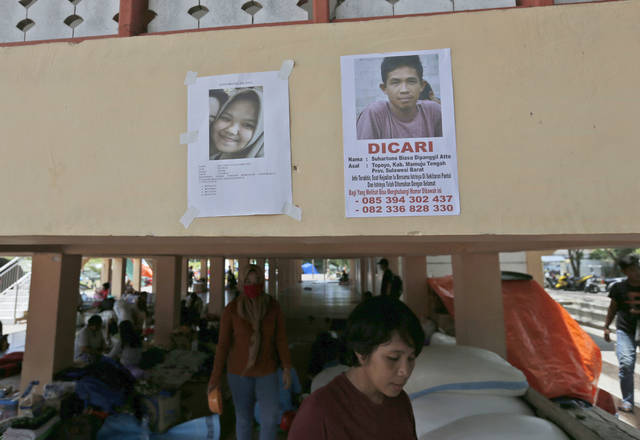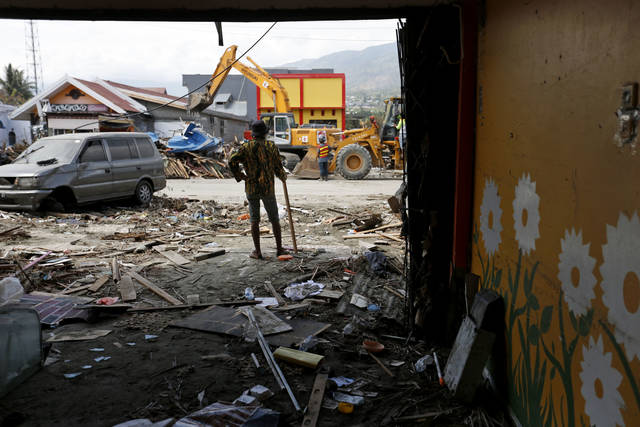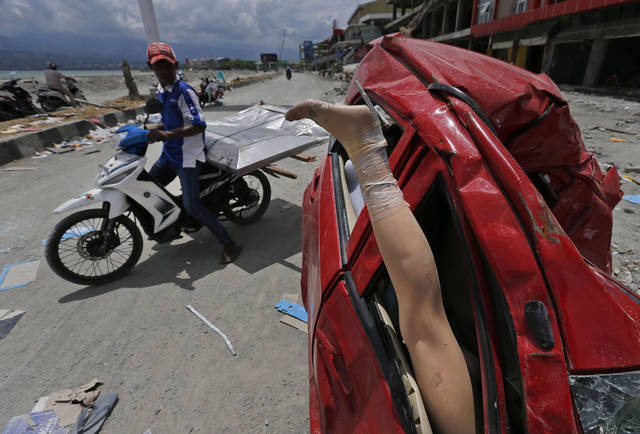JAKARTA, Indonesia — The death toll from the earthquake and tsunami on Indonesia’s Sulawesi island has climbed past 2,000, the disaster agency said Tuesday, as authorities prepared to end the search for thousands of victims feared buried in mud and rubble in the hardest-hit neighborhoods.
JAKARTA, Indonesia — The death toll from the earthquake and tsunami on Indonesia’s Sulawesi island has climbed past 2,000, the disaster agency said Tuesday, as authorities prepared to end the search for thousands of victims feared buried in mud and rubble in the hardest-hit neighborhoods.
Agency spokesman Sutopo Purwo Nugroho said the toll from the Sept. 28 twin disasters had climbed to 2,010. He said authorities will hold prayers Thursday to mark the end of the search in the Petobo, Balaroa and Jono Oge areas of Palu city, where the quake caused loose soil to liquefy, swallowing houses and burying the occupants with them.
Efforts to retrieve bodies, many entombed under mud and rubble as deep as 3 meters (10 feet), will not continue because of the difficult terrain and advanced state of decomposition that made the bodies unrecognizable and could cause contamination, Nugroho said.
“On Oct. 11, we will hold joint prayers in Balaroa, Petobo and Jono Oge to end the evacuation of bodies,” he told a daily news briefing on the relief efforts. While the official search will end, Nugroho said authorities will not stop villagers from continuing to dig through the ruins for their loved ones.
The areas, which now look like vast wastelands, will be turned into memorial parks to remember the victims, and survivors will be relocated to safer locations, he said.
Nugroho said the disaster agency has not yet been able to verify unofficial estimates from village chiefs in Balaroa and Petobo that 5,000 people are missing in the two areas.
He said the region had recorded 508 aftershocks since the magnitude 7.5 earthquake, which caused a giant wall of water that destroyed large swaths of land in Palu and surrounding areas.
The disaster destroyed more than 65,000 homes and buildings, and displaced more than 70,000 people. Thousands are still living in temporary shelters and tents across Palu, but life is beginning to return to normal in some areas, with plans for redevelopment underway, officials said.





